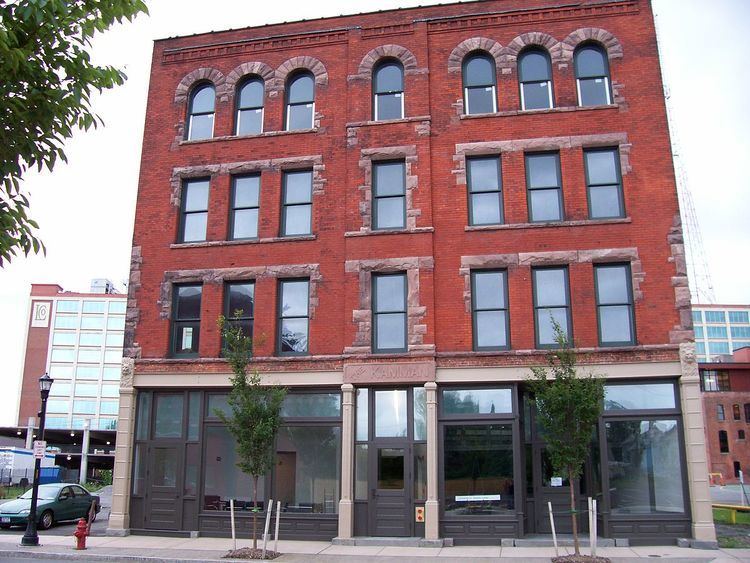Name F.W. Caulkins | ||
 | ||
Franklin Wellington Caulkins (April 28, 1855 – January 9, 1940) was a prominent architect in Buffalo, New York. Between 1876 and 1881, early female professional architect Louise Blanchard Bethune worked in his office and for Richard A. Waite.
Contents
Caulkins was born on April 28, 1855 in Hartford, Connecticut to Dr. Russell Caulkins and Jane Whitbeck Caulkins. He worked at the Buffalo office of Milton Beebe in 1875 and set up his own practice in 1878 at the Townsend Block of Main and Swan Streets. Caulklins married Jennie Louise Van Slyke of Rochester, New York in 1878.
Designs
In 1878 he designed 69 Symphony Circle for Malcolm J. McNiven. In 1879 he designed 51 Symphony Circle for Mrs. Ira S. Bennett. In 1880 he designed 55 Symphony Circle for Frank Porter. He also designed 741 West Ferry St. for James A. Smith (demolished). In 1881 he designed the (Dr. James P.) White Building from Main Street to Erie Street (replaced in 1906 with a taller White Building though some of the cast iron columns of the earlier building remain on the Erie Street façade). Circa 1880 he designed the Chapin Building (demolished 1926). In the early 1880s he also designed the Austin Building. In 1833 a Unitarian Church was torn down and redesigned by Caulkins from the first floor up and was extended in length along Eagle Street. In 1881 he designed Prospect Avenue Baptist Church additions on the corner of Georgia and Prospect Avenues. In 1882 he designed 415 Franklin Street (the Caulkins House) for himself. He relocated to Minneapolis, Minnesota from 1882 before returning to Buffalo in 1885. He had his office in the Chapin Building until 1903. Other projects included a remodel of the Linwood Avenue house on the southeast corner of Linwood and West Ferry; design of the building at 410 Delaware Ave. (demolished in 1966); 430 Delaware Avenue building for Thomas Ramsdell; building at 85 Genesee Street (demolished); State National Bank at 8 Webster Street in North Tonawanda; and the 1888 Maple Street Baptist Mission Church (demolished early 1980s).
Caulkins moved to Missouri in 1903, became a widower in 1905 and then married Gertrude B. Smith. From 1905 he worked in Missouri, Texas and Louisiana until his retirement in 1930. After retiring he lived at the National Elks Home in Bedford, Virginia.
Caulkins died in Bedford in 1940.
